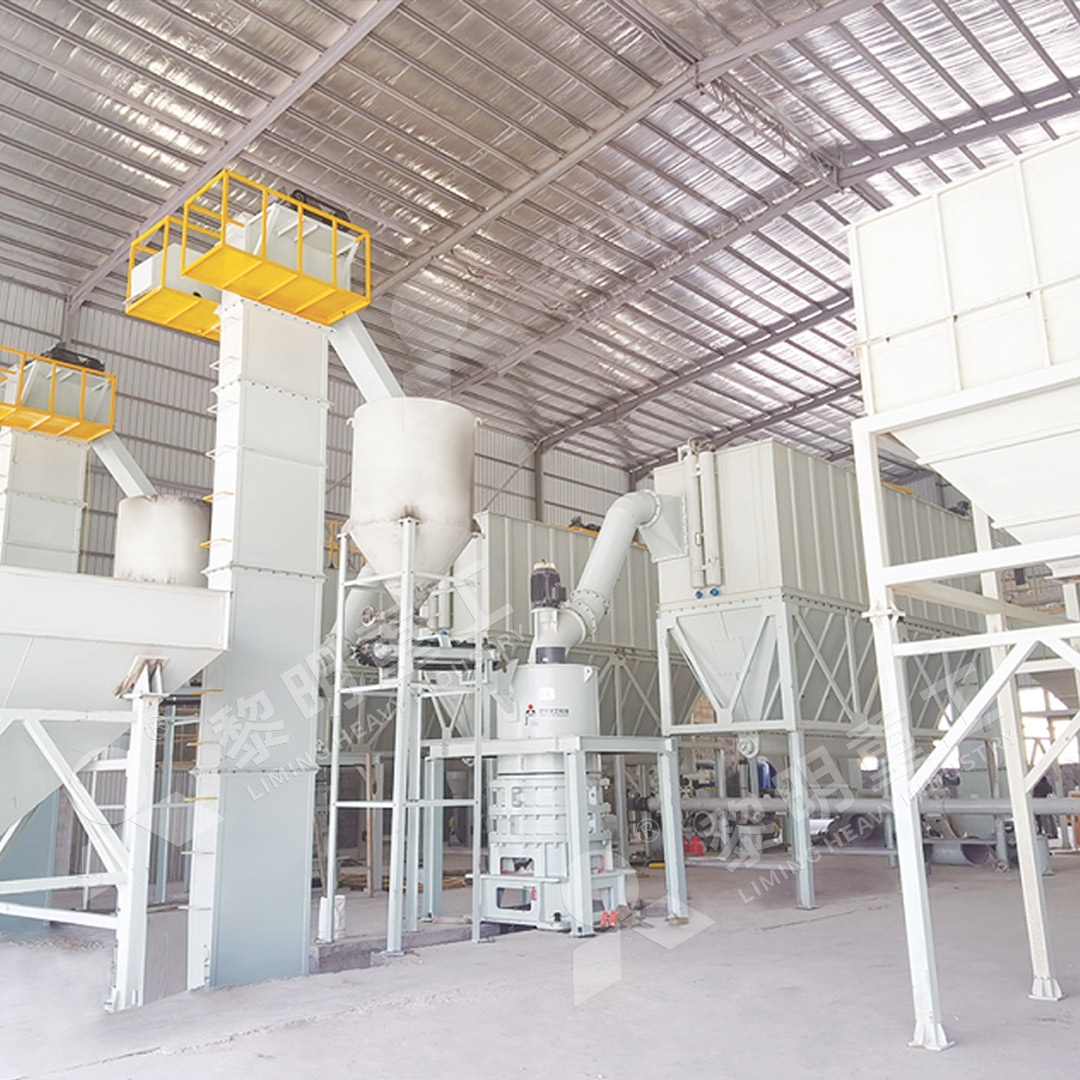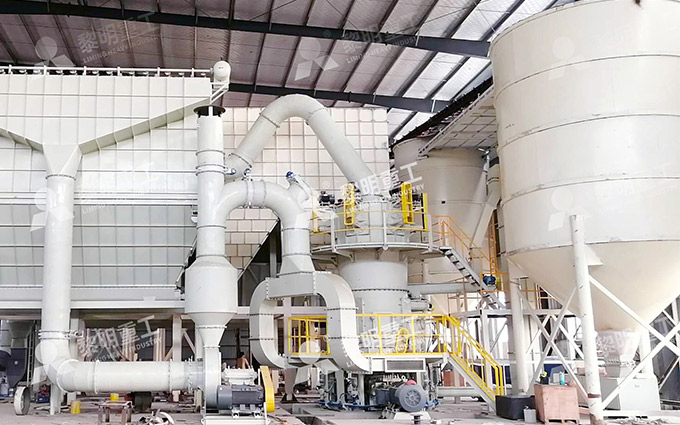Industry News
Monthly Operating Cost of Ultrafine Mill for Dolomite in Lime Plants
2025-11-15 09:06:55
We are Liming Heavy Industry, a manufacturer of various types of industrial crushers, such as Raymond Mill, Trapezoidal Mill, Vertical Mill, Ultrafine Mill, Ball Mill, etc.
Our mills can process the following minerals:
limestone, quicklime, kaolin, talc, barite, bentonite, calcium carbonate, dolomite, coal, gypsum, clay, carbon black, slag, cement raw materials, cement clinker, etc.
If you need a mill to process stone or minerals into powder, please feel free to contact me (WhatsApp: +86 153 3380 7511). Thank you.
Dolomite is a key material in lime production, and ultrafine mills are commonly used to process dolomite into a fine powder suitable for use in various industrial applications. For lime plants, choosing the right grinding mill is essential for ensuring operational efficiency, quality control, and cost-effectiveness. In this article, we will discuss the monthly operating costs associated with running an ultrafine mill for dolomite processing in lime plants, and how businesses can optimize these costs to improve profitability.

Understanding the Role of Dolomite in Lime Production
Dolomite, a sedimentary rock composed of calcium magnesium carbonate, is widely used in the production of lime. In lime plants, dolomite is calcined to produce dolomitic lime, which is essential for various industries, including steel manufacturing, environmental management, and chemical production. The process of producing dolomite lime requires grinding the dolomite into fine particles before it is heated to high temperatures in a kiln.
Ultrafine mills are specialized machines designed to achieve a very fine particle size for materials like dolomite. These mills can grind dolomite to a fine powder that can then be used in the lime manufacturing process, improving the efficiency of calcination and the quality of the final product.
Key Factors Affecting the Operating Costs of Ultrafine Mills
The operating costs of an ultrafine mill for dolomite processing in lime plants are influenced by several key factors. Understanding these factors can help plant operators manage costs effectively and improve the overall profitability of their operations.

Energy Consumption
One of the most significant components of the operating cost of ultrafine mills is energy consumption. Ultrafine grinding requires a significant amount of power, as it involves breaking down the dolomite into very fine particles. The energy consumption will depend on the size and type of ultrafine mill used, as well as the hardness of the dolomite and the desired fineness of the powder.
To optimize energy use, it is important to choose a mill that is energy-efficient and capable of handling the required throughput. Modern ultrafine mills, such as those from Liming Heavy Industry, are designed with energy-saving features that help reduce operating costs in the long term.
Maintenance Costs
Regular maintenance is necessary to keep ultrafine mills running efficiently. Maintenance includes tasks such as checking and replacing wear parts (e.g., grinding rollers, liners, and separator blades), lubricating moving parts, and inspecting the overall condition of the machine. Inadequate maintenance can lead to higher repair costs and downtime, which in turn affects production efficiency.
To minimize maintenance costs, it is essential to choose an ultrafine mill that is durable and easy to maintain. Mills from Liming Heavy Industry are known for their robust construction and long service life, reducing the need for frequent repairs.
Labor Costs
Labor costs are another consideration when estimating the monthly operating cost of an ultrafine mill. While automated mills can reduce labor requirements, there is still a need for skilled workers to operate and monitor the equipment. Labor costs can also include wages for technicians, maintenance staff, and machine operators.
By investing in advanced, automated ultrafine mills, lime plants can reduce the number of workers needed to operate the mill and streamline the overall production process, thus lowering labor costs.

Raw Material and Wear Costs
The cost of raw materials and the wear rate of grinding components can significantly influence the overall operating cost. Dolomite is a relatively hard material, and continuous grinding can lead to wear and tear on the mill components. Over time, components such as grinding rollers, grinding plates, and liners need to be replaced to maintain optimal performance.
Liming Heavy Industry ultrafine mills are designed to reduce wear on the grinding parts, which lowers the frequency of replacements and the associated costs. The long lifespan of these mills translates into lower overall operating costs for lime plants.
Throughput Capacity
The throughput capacity of the ultrafine mill also impacts its operating costs. Mills with higher capacity can process larger volumes of dolomite per hour, which helps reduce per-unit processing costs. However, it is important to balance throughput with energy consumption to avoid excessive costs.
Choosing a mill that matches the plant's production capacity is essential for managing operating costs. Liming's ultrafine mills are designed for high throughput, ensuring efficient processing without compromising energy efficiency.

Estimating the Monthly Operating Cost
To estimate the monthly operating cost of an ultrafine mill for dolomite in lime plants, you need to take the following factors into account:
Energy Consumption: The mill's energy consumption (kWh) multiplied by the energy cost (per kWh).
Maintenance Costs: Regular maintenance activities, including part replacements, labor, and repair costs, over the course of a month.
Labor Costs: Wages for the workers involved in operating, maintaining, and overseeing the milling process.
Material Costs: The cost of raw dolomite and any additional materials needed to maintain the grinding process.
Throughput Capacity: The total amount of dolomite processed per month, which affects the costs associated with labor, materials, and wear.
By optimizing these variables, lime plants can reduce the overall operating costs of ultrafine mills. Liming Heavy Industry's mills, for example, are designed to offer low energy consumption, reduced maintenance requirements, and longer service life, all of which contribute to lower overall operating costs.

Conclusion
The monthly operating cost of an ultrafine mill for dolomite processing in lime plants is influenced by several factors, including energy consumption, maintenance costs, labor expenses, and wear rates. By investing in high-quality, energy-efficient equipment from trusted suppliers like Liming Heavy Industry, lime plants can minimize operating costs while improving productivity and product quality. With advanced features and reliable performance, Liming's ultrafine mills offer an ideal solution for cost-effective dolomite processing.
Frequently Asked Questions (FAQ)
1. What is the main factor affecting the operating cost of an ultrafine mill?
Energy consumption is the main factor affecting the operating cost, as ultrafine grinding requires significant power.
2. How can I reduce the maintenance costs of an ultrafine mill?
Regular maintenance, using high-quality parts, and investing in durable mills like those from Liming Heavy Industry can help reduce maintenance costs.

3. Does the capacity of the mill affect the operating cost?
Yes, higher capacity mills can process more material in less time, reducing per-unit processing costs. However, energy efficiency must also be considered.
4. How often do wear parts need to be replaced in an ultrafine mill?
Wear parts, such as grinding rollers and liners, need to be replaced periodically, depending on the hardness of the material and the frequency of use.
5. Are Liming Heavy Industry's ultrafine mills energy-efficient?
Yes, Liming's ultrafine mills are designed with energy-saving features to help reduce operating costs and improve energy efficiency.
6. Can labor costs be reduced with automated mills?
Yes, automated mills reduce the need for manual intervention, which can help reduce labor costs and improve efficiency.







